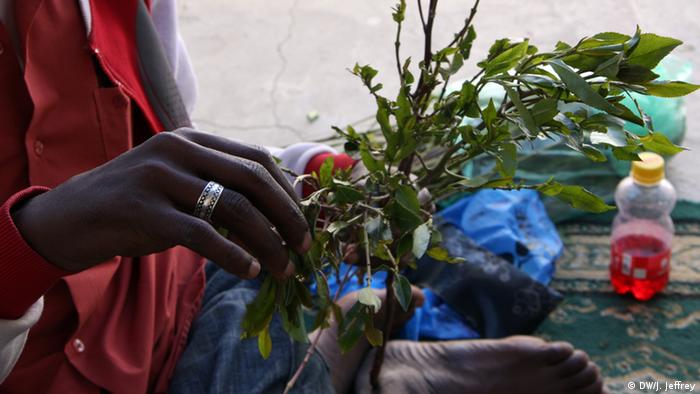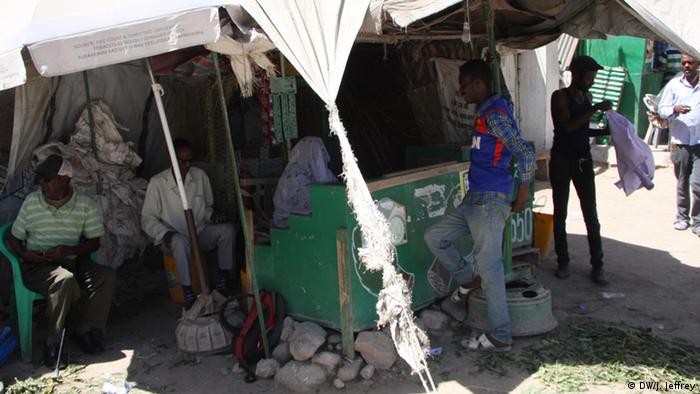The narcotic plant khat is so deeply embedded in Somaliland‘s local culture that it has become a factor in the economic life of the country. Critics lament the disruptive effect on families.
After a buzz
Around 90 percent of adult males in Somaliland chew the narcotic plant khat. They’re after ‘mirqaan,’ the Somali word for the buzz that it can give. Somalilanders spend a total of more than $1 million (930,000 euros) a day on khat. ‘My friends lend me the money,’ said Abdikhalid when asked how he can afford khat even though he is out of work. ‘Once I’m employed again I will return the favor.’
Customers often purchase their supplies from so-called khat mammas, women who run street stalls. ‘I had a shop and a cafe and started selling khat as I wanted to expand my business,’ says Zahre Aidid, a khat mamma for 22 years. Business is good. She runs her khat stall beside a dentist’s in central Hargeisa where customers typically spend between $6 and $10 for a day’s worth of khat.
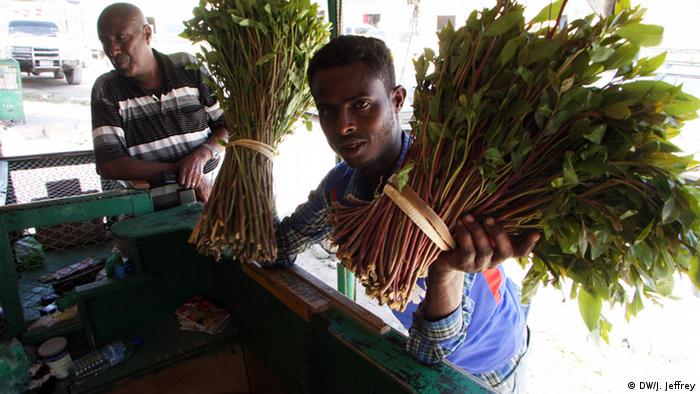 Khat and the civil war
Khat and the civil war
‘Many women entered the khat business after the civil war as it was the only way to provide for their families,’ Aidid says. ‘After they started doing it, they knew how to do it well, so they continued. An unaccountable number of women now sell khat.’ An estimated 20 percent of Somaliland women also chew khat and the figure is rising. Women normally consume it in private.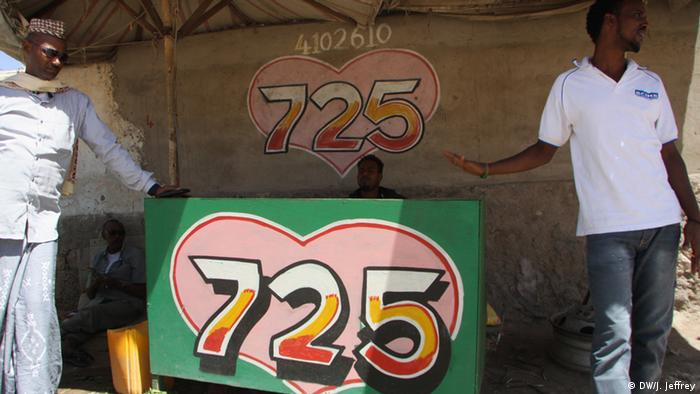 Khat express
Khat express
Khat grows in northeastern Ethiopia from where it is imported on trucks that hurtle along the rough roads through the Somaliland desert. Khat stalls typically display a colorful number identifying the particular khat supplier in order to cater for customers’ preferences. ‘There’re about 5,000 numbers,’ says a customer at a stall selling khat from supplier 725.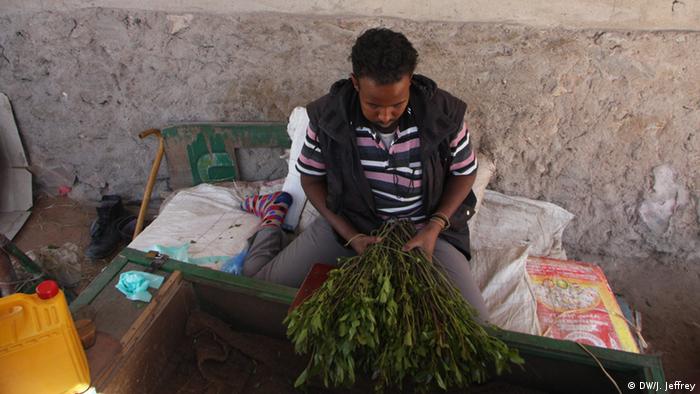 Economic implications
Economic implications
Somaliland’s khat economy is so well established that it has become an important tax earner for the government. ‘In 2014 the Somaliland budget was $152 million of which 20 percent came from khat,’ says Weli Daud from the Ministry of Finance. But that doesn’t stop critics from complaining of khat’s disrupting influence on family life and from linking it to spendthrift habits and domestic violence.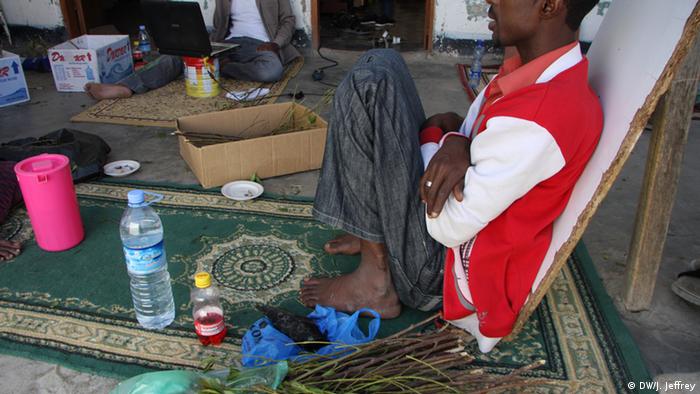 Families suffering
Families suffering
‘It comes down to the man not being part of the family and the woman being left to do everything,’ says Fatima Saeed, a political advisor. ‘Men sit for hours chewing – it’s very addictive. Khat can cause hallucinations, sleeplessness, loss of appetite and other problems.’ She says an outright khat ban simply isn’t realistic but regulation would help.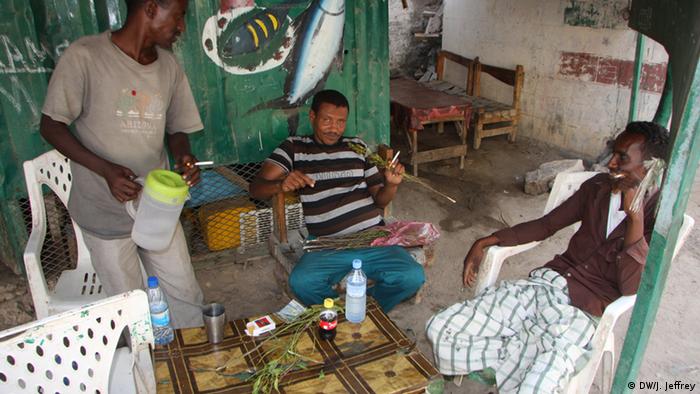 Defending khat
Defending khat
‘Khat brings people together, it facilitates the discussion of issues and exchanging information,’ Abdul says. ‘Where you come from it’s often difficult for people to get together, but here they learn about their neighbours and what problems they have.’ It is unlikely Ethiopia would want Somalilanders to stop gathering and chewing: annual sales of khat to Somaliland total $524 million.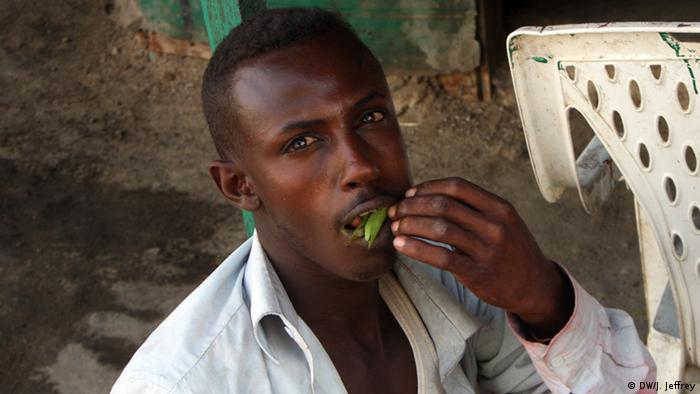 Chewing continues
Chewing continues
‘I don’t insult khat as it’s my business,’ Aidid replies when asked about khat-related concerns. Saeed says the current government won’t implement any regulations. So trade continues briskly as each day men disappear for hours on end to gather with friends and chew the leaves of a plant viewed as sacred by the ancient Egyptians. “To really understand khat you have to chew it,” Nafyar says.
(Source: Deutche Welle)
























